Flavor characteristics of Ethiopian Guci Wulaga Coffee beans sharing of brewing parameters of toh washing champion coffee beans

Many guests like toh coffee beans in Qianjie, but there are also many guests who don't know what coffee beans toh is, so Qianjie specially came to talk about the origin of toh beans.
What is TOH?
TOH, whose full name is "East Africa Taste of Harvest Competition" (East Africa Flavor Competition), is a coffee raw bean cup test competition sponsored by the African Fine Coffee Association (AFCA) and held by 12 coffee producing countries in Africa, similar to the COE raw bean cup test competition led by Brazil. Wulaga stood out as the champion of the TOH washing group in 2020 with a score of 89.8.

Champion Dou Wulaga
This coffee bean comes from the sub-production area of Wulaga (Uraga), which is a well-known production area in Ethiopia. The Guji producing area originally belongs to the Sidamo producing area, but it is independent because it has the same unique flavor as Yega Sheffield, and this producing area also produces a lot of famous coffee. For example, the Sakuran series that we often drink comes from Humbera, the sub-region of the Guji producing area.
Wulaga is a sub-producing area in the Guji producing area, with an altitude of 2300m. Although the town of Wulaga is located in the Guji producing area, it is geographically closer to the high mountain area of Yega Xuefei at an altitude of 2200m. The geology of this area belongs to the nutrient-rich black soil (Vertisol), and the high-altitude topography creates the rich fruit flavor of Wulaga.
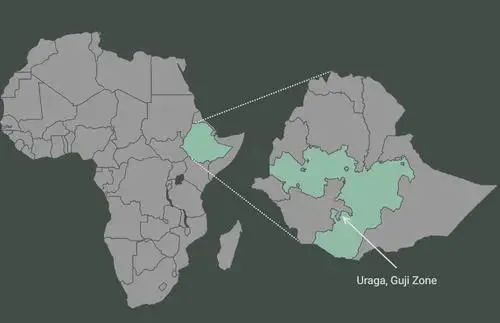
Processing station and processing mode
This champion bean is washed by the Sela Gajaba washing treatment station. The processing station, located 12 kilometers outside the town of Wulaga, is one of the best processing stations in Wulaga. The treatment process at the treatment station is almost done indoors, thus minimizing the chance of coffee beans being contaminated.
The freshly picked coffee fruit is screened through two processes, and the all-red and flawless coffee fruit is selected, and then the peel and flesh are removed. Put the raw coffee beans with residual pectin into the water and let them ferment for about 18-36 hours; after fermentation, wash the raw coffee beans with parchment in a flow tank to remove the pulp and pectin; after washing, dry the coffee beans or dry them with the help of a dryer to reduce the moisture content to about 12%. Finally, remove the parchment of raw coffee beans.
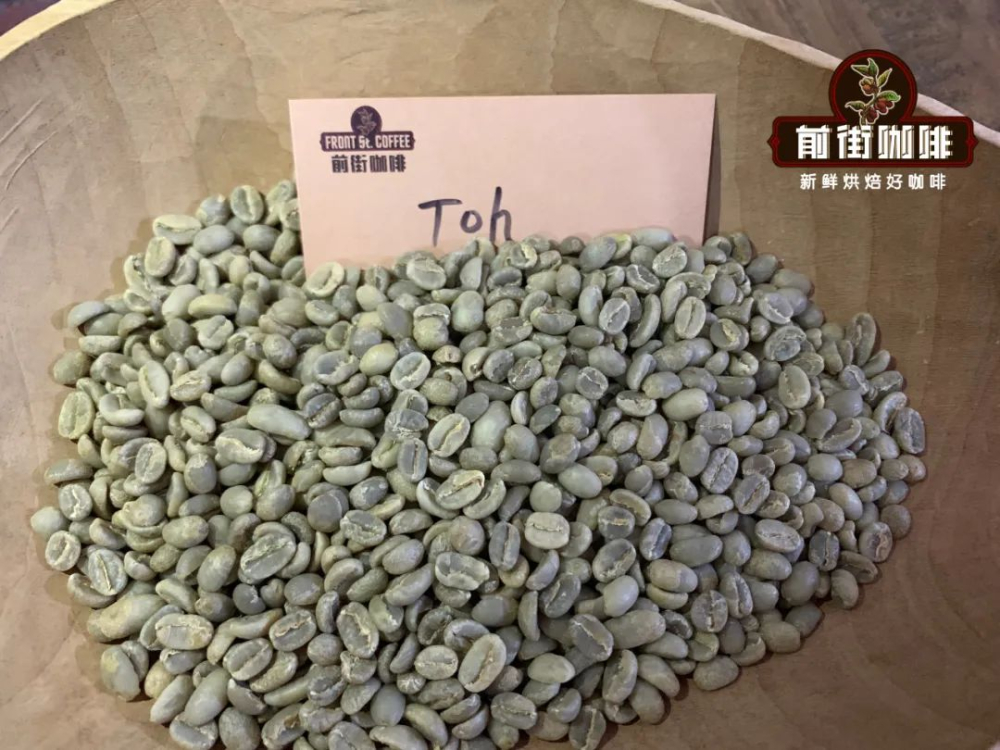
The coffee treated in this way has the traditional floral, citrus and tea taste of Ethiopian coffee. It adds a lot of cleanliness.
Roasting Analysis of Qianjie Coffee
The roaster of Qianjie Coffee believes that as a washed champion bean, it is necessary to retain its clean taste, highlight the flavor of white flowers and fruits, and finally determine the following baking curve by slightly adjusting the duration of the dehydration period and the burst time.
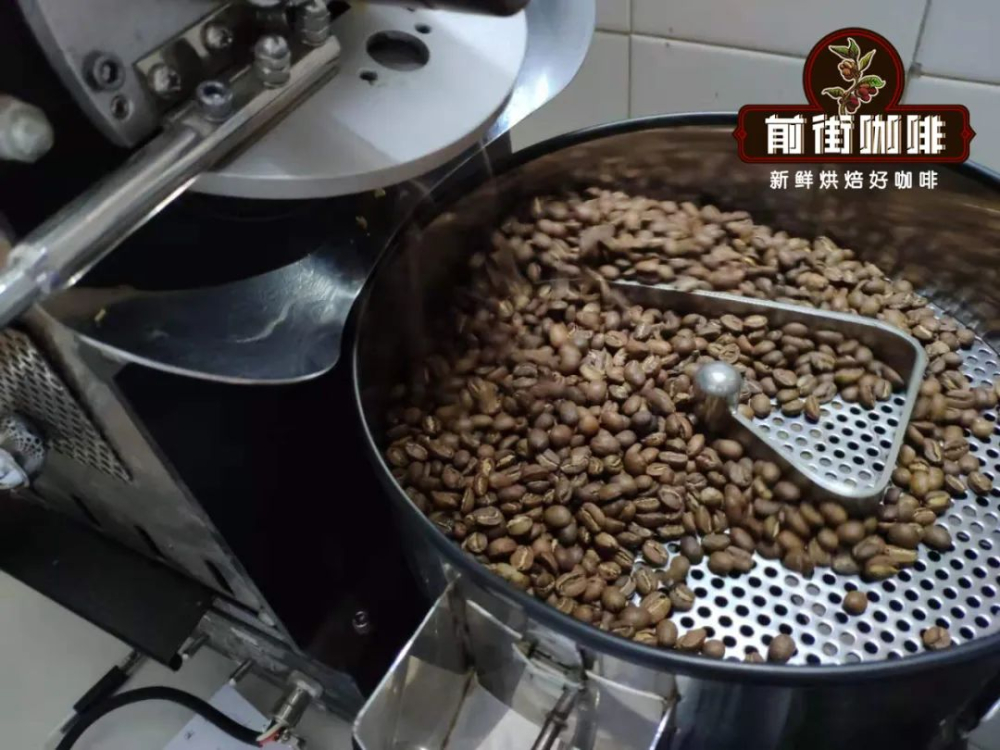
The baker in Qianjie adopts Yangjia 800N (300g baking capacity): the furnace temperature is 180℃, the firepower is 130g, the throttle is opened 3; the temperature recovery point is 36 ", when the furnace temperature is 140℃, the throttle is opened to 4, the firepower is unchanged; when the furnace temperature is 151℃, the bean table turns yellow, the smell of grass disappears completely, entering the dehydration stage, the firepower drops to 110mm.
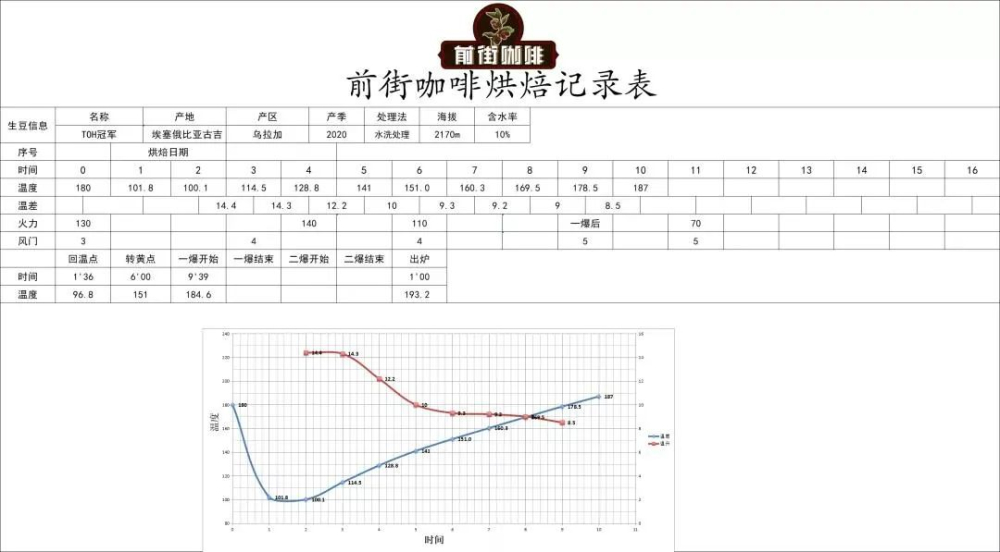
The smell of toasted bread has obviously changed to the smell of coffee, which can be defined as a prelude to an explosion. At this time, it is necessary to listen carefully to the sound of the explosion point. The sound of the explosion point starts to explode when the air door does not open to 5. After an explosion, the development of the bean surface will be changed to 1 hour, and the 193.2 ℃ will be put into the pot.
Sharing of coffee brewing parameters in Qianjie
In front of the street, the flavor of this bean is jasmine, lemon, berry, grapefruit, honey and green tea.
The Qianjie barista decided to highlight the jasmine aroma, grapefruit, honey and green tea of this coffee. Use the following cooking parameters:
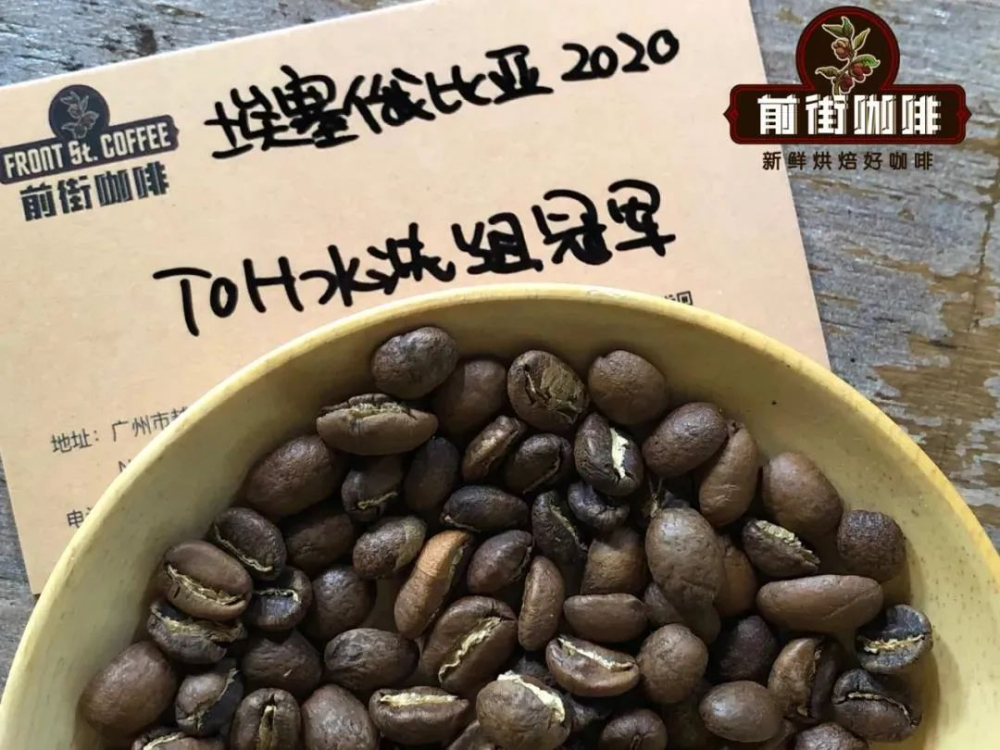
Also take 15 grams of coffee powder as an example, through the brewing test, Qianjie found that this coffee is prone to astringency after being soaked for a long time, so the final grinding degree chooses the normal hand grinding degree to be on the rough side, and the passing rate of the No. 20 standard sieve is 70%.
Using 1:16 ratio of cooking powder to water, enlarging the ratio of powder to water can highlight the fragrance of flowers and fruits. The water temperature is 91 ℃, which is very suitable for brewing Ethiopian coffee beans, which is easy to highlight the tonality of fruits such as citrus.
Cooking method
This time, we also use the three-stage brewing of Qianjie. First, preheat the coffee pot and filter cup, pour in 15g coffee powder and gently pat flat. Inject 30 grams of water for steaming for 30 seconds, it is not recommended that the steaming time is too long, it is easy to feel astringent.
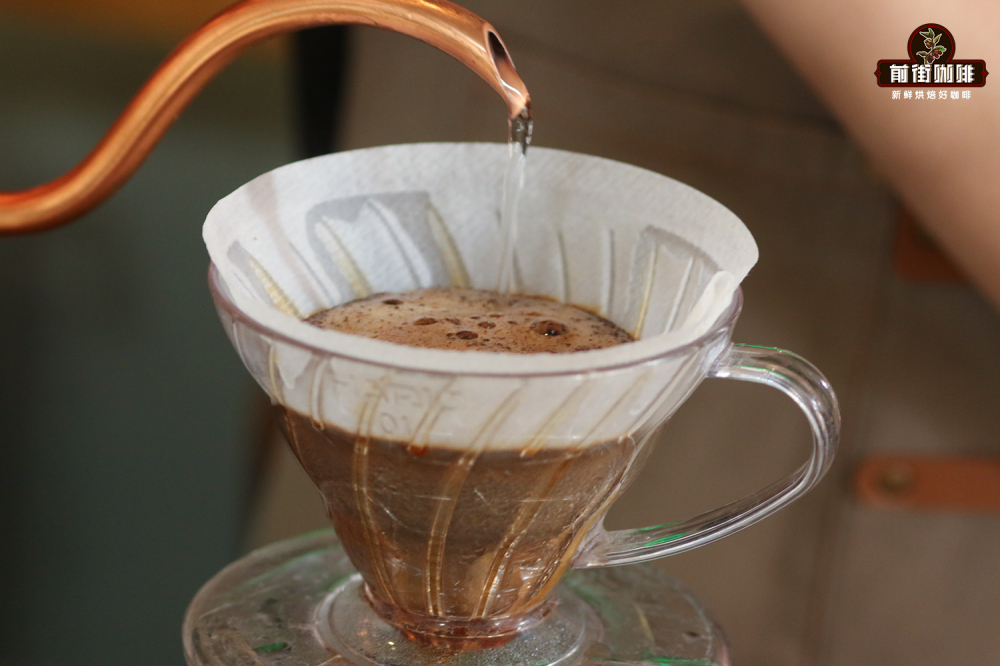
In the second stage, 120 grams of water is injected outward around the concentric circle in the center, and the injection time is about 1 minute. When the powder bed is about to be seen, the last section is injected, 90 grams of water is injected in the same way, and the filter cup is removed after all the water flows into the lower pot. Finish the extraction, and the cooking time is 2 minutes 05 seconds.
Brewing flavor description: the wet fragrance has a hint of jasmine and citrus aromas. you can feel citrus-like fruit juice in the front, honey grapefruit tea in the middle and back, and oolong tea in the aftertaste.
Important Notice :
前街咖啡 FrontStreet Coffee has moved to new addredd:
FrontStreet Coffee Address: 315,Donghua East Road,GuangZhou
Tel:020 38364473
- Prev

How about Ethiopian Sidamo coffee? strong aroma of coffee in Sidamo, Ethiopia.
Professional coffee knowledge exchange more coffee bean information please follow the coffee workshop (Wechat official account cafe_style) front street-Sidamo Coffee introduction in the coffee-producing countries, Ethiopia has been a legend. Not only because it is the birthplace of Arabica coffee beans, Ethiopian coffee, beans from different producing areas have different unique aroma. Sidamo state
- Next

What are the characteristics of Ethiopian Sidamo coffee with a balanced flavor and high sweetness?
Professional coffee knowledge exchange more coffee bean information please follow the coffee workshop (Wechat official account cafe_style) Front Street-Sidamo Coffee characteristics Sidamo Coffee (Sidamo Coffee) is named after its origin. The district of Sidamo is located in the south of Ethiopia and borders Kenya. Sidamo, Harald and Limu
Related
- Beginners will see the "Coffee pull flower" guide!
- What is the difference between ice blog purified milk and ordinary milk coffee?
- Why is the Philippines the largest producer of crops in Liberia?
- For coffee extraction, should the fine powder be retained?
- How does extracted espresso fill pressed powder? How much strength does it take to press the powder?
- How to make jasmine cold extract coffee? Is the jasmine + latte good?
- Will this little toy really make the coffee taste better? How does Lily Drip affect coffee extraction?
- Will the action of slapping the filter cup also affect coffee extraction?
- What's the difference between powder-to-water ratio and powder-to-liquid ratio?
- What is the Ethiopian local species? What does it have to do with Heirloom native species?

